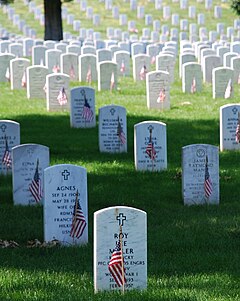Today we commemorate throughout the United States Memorial Day. A day to commemorate the sacrifices of the American soldier and his sacrifices to protect and defend freedom for Americans. The rest of the story is that Memorial Day has a quiet origin today.
Memorial Day was originally started as “Decoration Day” and is often cited as originating in Kingston, Georgia, a small community northwest of Atlanta and near Rome, Georgia. It was there that the first recorded “Memorial Day” was held to commemorate the fallen dead. Thus, April 26, 1865, the date Confederate General Joseph E. Johnston surrendered his army in North Carolina was chosen. It can certainly be argued that other communities across the Southern states commemorated this date in remembrance of fallen Southern heroes.
The commemoration was originally to the soldiers who fought and died defending their homes, firesides and 
In January 1866, the Ladies’ Memorial Association of Columbus, Georgia, passed a motion agreeing that they would designate a day to throw flowers on the graves of fallen soldiers buried at the cemetery on April 26th.
A marker in the town of Kingston, Georgia, states:
“First Decoration, or Memorial Day, was observed in Kingston in late April of 1865, and has been a continuous observance here since that day, the only such record held by any community in this Nation. The first Memorial, or Decoration Day, was observed while Federals still occupied this town, flowers being placed on both Confederate and Federal graves that day. Much credit is due the Dardens and other patriotic citizens of this town for their untiring efforts to keep alive memories of the gallant Confederates — greatest fighting men of all time. 008-39 GEORGIA HISTORICAL COMMISSION 1956”
The women of Kingston began decorating the graves of of both Confederate and Federal soldiers in April of 1865. This commemoration spread rapidly throughout the Southern states as widows, orphans and other Southerners sought to remember their fallen dead.
The Ladies Memorial Association of Montgomery, Alabama, was organized on April 14, 1866. A letter to the Ladies Memorial Association, written by Mrs. Cameron Freeman Napier, of Ramer, Alabama, states the following:
Confederate Memorial to fallen soldiers, Montgomery, Alabama
After the Civil War, laying flowers on the graves of fallen soldiers was a common expression of remembrance in both the South and the North. One of the earliest documented instances of grave decoration occurred on April 26, 1865, when Sue Adams of Jackson, Mississippi, placed flowers on the graves of Union and Confederate soldiers in that city. A year later, a group of women in Selma, Alabama, commemorated the Battle of Selma with grave decorations on April 2, and Columbus, Georgia, women memorialized the anniversary of Gen. Robert E. Lee’s surrender on April 9. A letter to the editor of the Columbus newspaper subsequently proposed that April 26 be designated “the South’s All Souls Day.”
Inspired by the Columbus letter, Mary Anne Phelan of Montgomery became a leading proponent of the women’s effort to memorialize Confederate troops in Alabama. She and her husband, Judge John Dennis Phelan, were the parents of 12 children. Six of their seven sons fought in the war. Two were wounded, and two died. Phelan convinced the Ladies Society for the Burial of Deceased Alabama Soldiers founded days earlier on April 16, to change its name to the Ladies Memorial Association and to conduct a Confederate Memorial Day service at Oakwood Cemetery in Montgomery on April 26. The ritual established in 1866 has been repeated every year since without interruption. By 1869, the association had raised enough money to build an obelisk at Oakwood and a pavilion in which to hold its annual ceremonies. The local chapter of the Sons of Confederate Veterans and the Admiral Semmes Chapter No. 5 of the United Daughters of the Confederacy decorates the graves in Auburn’s Pine Hill Cemetery every year, and Confederate Memorial Park in Chilton County also holds a ceremony every year.
During the late nineteenth and early twentieth centuries, Confederate Memorial Day was also a bank and school holiday. Girls would assemble at dawn to make daisy chains and march in procession to Oakwood Cemetery with members of the Ladies’ Memorial Association, veterans, dignitaries, and others to honor the 724 Confederate soldiers who are buried there. The ceremony featured songs, speeches, and prayers, and participants placed flowers, wreaths, and flags on the graves of veterans.
Memorial organizations suspended activities during World War II, and after the war many never returned to their previous levels of membership and activity. Despite its waning popularity, Confederate Memorial Day celebrations are still held in numerous towns across the state.
There are also many who contend that Memorial Day started in started in Waterloo, New York, in 1866. In fact, President Lyndon B. Johnson even signed a proclamation in 1966 declaring Memorial Day to have originated in Waterloo, but historians have discredited that claim after finding an 1880 newspaper that ran a correction saying it was actually “1868”. Yet, the myth of origination continues to be proclaimed by many, including the village of Waterloo itself.
Some state that Memorial Day originated in Charleston, S.C. on May 1, 1865, by former slaves. Indeed, other commemorations have occurred on various dates and places, but the origin has been traced to April 26th, 1865 as the actual origination date.
How it Went National
Mary Ann Williams was corresponding secretary of the Ladies Memorial Association of Columbus, Georgia. Mrs. Williams wrote a letter to newspapers across the South urging Southern women to decorate the graves of Confederate soldiers in unity with flowers on April 26, 1866.
On April 26, 1866, women across the South gathered at cemeteries and decorated the graves of the fallen soldiers. The emotions ran high for the fallen soldiers and the women, empathizing with the mothers, sisters and family of the federal soldiers buried amongst the Confederate soldiers, decorated the graves of those federal soldiers.
This news quickly spread in newspapers, and in the North, poet Francis Miles Finch wrote a poem entitled “The Blue And the Gray.” Columbus State University (Georgia) Professor Richard Gardiner, co-author of “The Genesis of the Memorial Day Holiday”, relates that the verses say, “They banish our anger forever/ When they laurel the graves of our dead!”

Arlington National Cemetery
It was agreed by many authorities in the North that Decoration Day was too big and important to neglect. In 1868, Memorial Day became a Federal Holiday, but since few flowers were in bloom in April in the northern states, the date was pushed back thirty days to May 30th so flowers could be used to decorate the graves.
Memorial Day was once again changed to the first Monday in 1971, when Congress passed the uniform Monday Holiday Act, making the memorial the last Monday in May. The holiday has not always pleased everyone who sought to keep the holidays separated, but overall most Americans have unified in commemorating Memorial Day as a day to honor fallen soldiers who have kept their oath, and fought to protect and defend the Constitution against all enemies both foreign and domestic.
While many visit grave sites, cemeteries and memorials this weekend, it is important to remember what American soldiers fight for and what their intended mission is to do: defend against the enemies of our country and our liberties. Many have paid the ultimate sacrifice for us to enjoy the freedoms we have enjoyed to date. Lest I be remiss, that is a task that cannot be neglected or ignored today as our liberties are on the line and under assault more than ever, as we witness domestically many who would strip us of those secured and guaranteed liberties men have fought and died to preserve over many generations. Two phrases immediately come to mind: “Be Ever Vigilant”, and Sic Semper Tyrannis or “Thus ever to tyrants”.

Please visit our sponsors and donate to support The Standard on this page.





 RSS - Posts
RSS - Posts